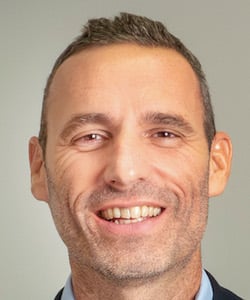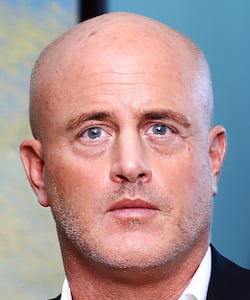
Stefan Haecker
Regional Manager Central America and Caribbean, Nippon Koei LAC

Rasmus Jacobsen
Managing Director, Monjasa
How have your operations evolved in the region over the years?
STEFAN HAECKER Nippon Koei is headquartered in Tokyo and is the largest engineering consulting firm in Japan in terms of international consulting business, but has a long trajectory in Latin America, where it has done a great deal of work over the years. In 2003, it decided to consolidate that business and set up a subsidiary in Latin America: Nippon Koei Latin America Caribbean. Originally, that entity was headquartered in Lima, and historically we have a strong presence there. In 2005, the decision was made to move the headquarters to Panama mainly for logistical reasons: to better serve the entire region. Not least due to its central location, Panama provides many advantages as a regional hub, as one can fly in and out directly to many mid- and large-sized cities. Originally, Nippon Koei Latin America and Caribbean was managed as a single region; however, in 2011 the service area was broken up into four different regions. Panama also serves as the headquarters for the Central America and Caribbean region. With the change in management structure, the company was able to grow significantly over the last few years. Traditionally, Nippon Koei LAC’s strongest markets are Peru and Panama. The company also has permanent offices in Paraguay, Brazil, Colombia, and El Salvador, and branch offices registered in Nicaragua, Ecuador, and Bolivia. We are also currently registering a subsidiary office in Mexico. Our main business line is engineering consulting. Around 90% of our projects are with the public sector and within that, our main focus is on transportation and environmental and energy infrastructure. We also perform urban development, agricultural, and architectural projects.
RASMUS JACOBSEN Our office in Panama servers as our regional headquarters, including North America. In terms of market volume, the Americas account for 19% of Monjasa’s total volume, while Paama accounts for around one-third of the volume in the Americas. The Americas’ overall volume doubled over the last year, partly due to better performance in Panama; our plans to increase our footprint in Panama turned out well. Panama is quite a tough market—it is a closed market and a lot of players are competing with eight or nine other bunker players. What we have seen is that it is a market that welcomes a different approach; therefore, we are focusing on quality management, compliance, and operations excellence. We are an ISO-certified company and we run our operations and offices with consideration to ISO-certified external audits. We exercise all precautions to ensure that our vessels and bunker tankers in the canals are living up to the expectations of our clients. In Panama, we introduced a satisfaction survey. Although this is a common practice for Monjasa, no other company in Panama has introduced such an instrument. It is a market that is generally driven by local barge operators that do not necessarily have a relationship with the end user.
What are your goals for the immediate future?
SH Our main priority for 2018, as for every other year, is to make sure we provide outstanding service to all our clients in the region. As one of the largest and most prestigious consulting firms in Japan, we understand the importance of meeting the expectations of our clients at every level and for every project size, no matter how small or large. We want to ensure that we stay competitive in terms of our cost structure, client management structure, and the service we provide to make sure our clients select us again for upcoming contracts.
RJ We have enough data and market research to forecast that our market share will climb to 15-20% in the next five years. The biggest factor is our vessels and the vast capacity they provide. For example, rather than rotating a vessel that can lift 4,000 tons, we prefer to employ a vessel that has the capacity to transfer 8,000 tons; the key to success in this business is rooted in understanding logistics. The company’s primary goal is to acquire a higher percentage of the supply chain because the key to success in Panama is to focus on expanding and managing the supply chain. Equally important in this market is to get a better control of the vessels in use and increase their utility.
ADVERTISEMENT
ADVERTISEMENT
You may also be interested in...

PANAMA - Industry
Luis de la Maza
Interview
President & CEO, Hilti Latin America & Executive Vice President, Hilti Group



